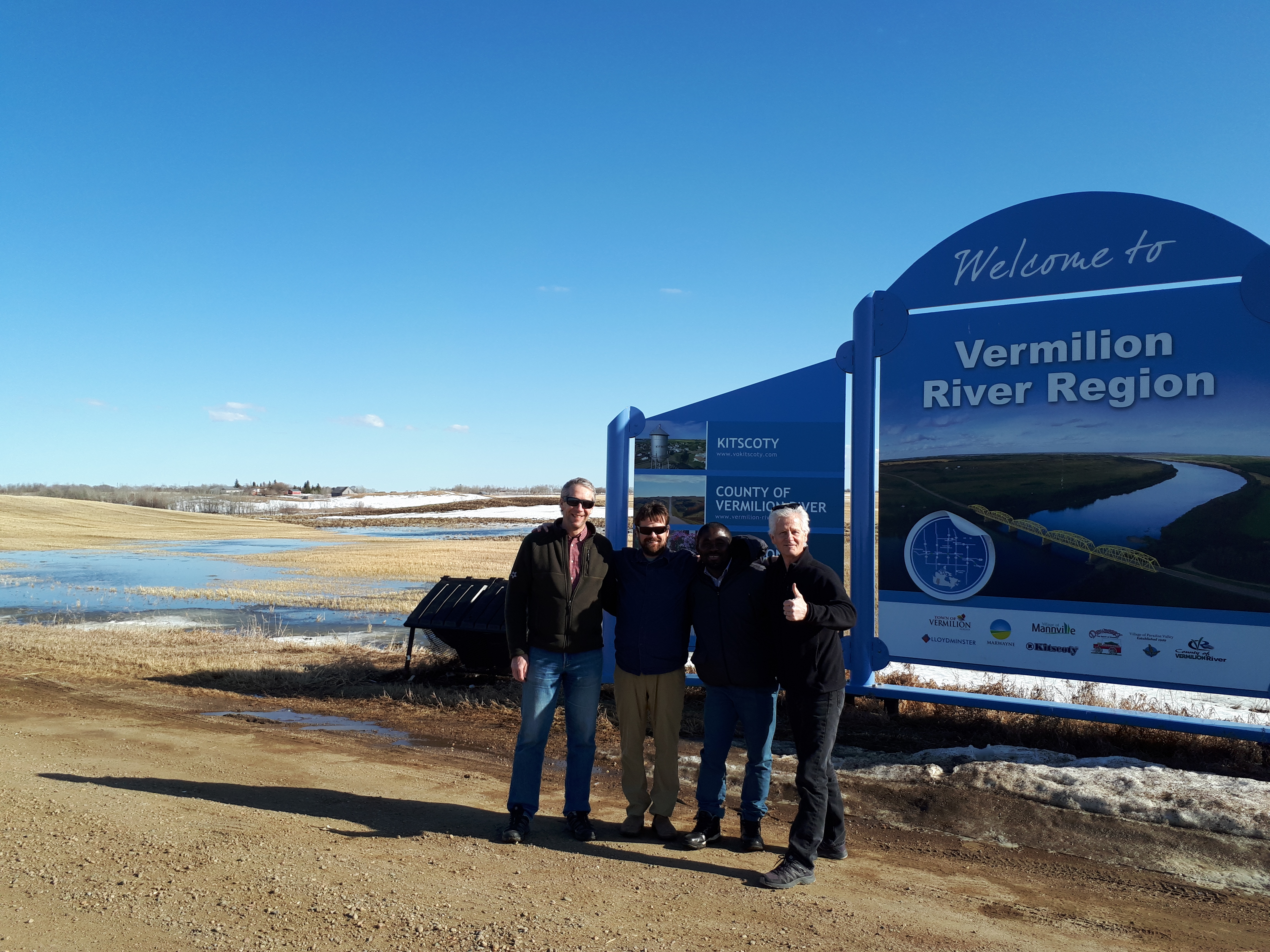July 2018 Update
Prairie Water progress during the first half of 2018
By Jared WolfePrairie Water research interns collect water samples from St. Denis National Wildlife Area east of Saskatoon. Photo credit K. Nugent.

The first half of 2018 has been an exciting and busy time for researchers in Prairie Water beginning with a productive kick-off meeting in January. Research projects are now well under way, and we have been travelling to a variety of public events and conferences to talk about our research.
As soon as the snow began to melt, our field team was ready to take on the first field season of Prairie Water. Researchers from our Wetlands research theme, along with partners from Ducks Unlimited Canada, Saskatchewan Water Security Agency, and Environment and Climate Change Canada, are collecting water samples from over 100 wetlands spanning the Alberta, Saskatchewan, and Manitoba prairie. These samples are being analyzed for water quality parameters, including pesticide and nutrient concentrations, to identify how these parameters vary geographically.
In June, Masters and PhD candidates in our Governance research theme began their regular visits to Mistawasis Nêhiyawak. Our students will be working with community members to co-design research methods, gather water stories, and learn about aspects of how local water knowledge is shared and decisions take place.
Our Biodiversity research theme is concluding work to advance our understanding of how local land-use and climate change interact to control the diversity of bird and invertebrate communities of prairie wetlands. They also completed a review of the value of ecosystem services provided by agricultural wetlands, worldwide, such pest control and carbon sequestration.

Within our Hydrology research group, we developed a set of watershed classes for the Canadian Prairie. The classes represent sub-regions based on similar characteristics, including land cover, geology, and soil type, and will be the foundation for simulating surficial hydrological behaviour of the region. This will allow us to understand how different types of watersheds respond to future environmental change scenarios.
The Prairie Water team has attended events across Canada these past few months. We attended the Red River Basin Commission Annual Conference in Winnipeg, MB, the Saskatchewan Association of Watersheds AGM in Swift Current, SK, the Prairie Habitat Joint Venture Policy Workshop in Leduc, AB, and the inaugural Global Water Futures Annual Science Meeting in Hamilton, ON, to name a few.
Finally, the Prairie Water User Community Advisory Committee is running and meeting regularly to assist in providing feedback for ongoing projects and direction. It is chaired by Steve Strang from the Red River Basin Commission.
We are excited to see our network growing as our research program progresses. We are looking forward to continued involvement with our partners and collaborators and to developing new connections with others. Feel free to get in touch!

